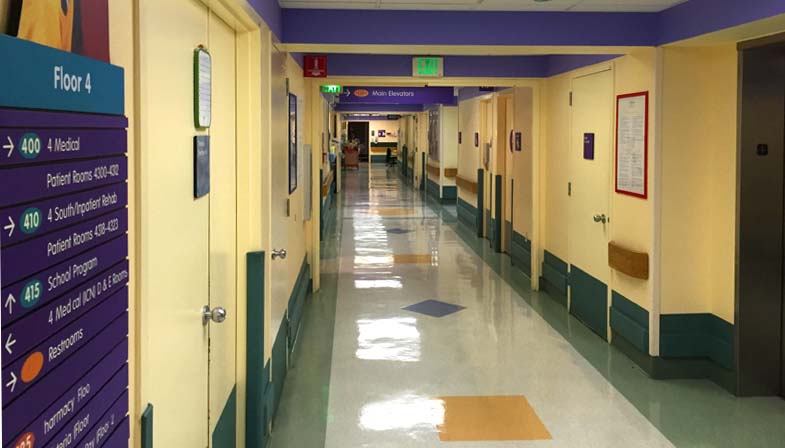 The first post in a series of posts about doing hands-on science at a children’s hospital. With the support of a recent grant, I’ve been providing hands-on science activities at UCSF Benioff Children’s Hospital Oakland for the last three months. Working with the hospital’s schoolroom and the kids has been very rewarding. After many years developing then delivering hands on science demos, doing science at a hospital didn’t feel like a big stretch for me, but it has been challenging! Luckily, howtosmile.org has been a treasure trove of activity ideas and I’ve developed an eye for identifying appropriate activities for this venue. I’ve started a list of activities, too, but I’ll write more about that later. My first blog posts will cover the realities of working with kids in a children’s hospital and how this website supports my work.
The first post in a series of posts about doing hands-on science at a children’s hospital. With the support of a recent grant, I’ve been providing hands-on science activities at UCSF Benioff Children’s Hospital Oakland for the last three months. Working with the hospital’s schoolroom and the kids has been very rewarding. After many years developing then delivering hands on science demos, doing science at a hospital didn’t feel like a big stretch for me, but it has been challenging! Luckily, howtosmile.org has been a treasure trove of activity ideas and I’ve developed an eye for identifying appropriate activities for this venue. I’ve started a list of activities, too, but I’ll write more about that later. My first blog posts will cover the realities of working with kids in a children’s hospital and how this website supports my work.
The first thing you should know about doing hands-on science in a hospital is sanitation. Everything you bring and do at the hospital should either be disposable or easily sanitized: this includes you! Your hands are vectors for harmful bacteria. You’ll need to learn how to properly wash and sanitize your hands, and you’ll do it a lot. Walk into a new room? Sanitize your hands. Go see a kid in another room? Wash your hands. Wipe your nose? Just ate lunch? Sanitize or wash. You’ll also quickly realize your hands will dry out. So, bring some lotion and apply it after you’ve left the hospital. You should also make sure your clothes have been freshly laundered: don’t wear dirty clothes.
Beyond taking care of your personal hygiene, you need to be thoughtful about the materials you bring into the hospital. Two basic rules: can the item be wiped down, and if not, is it disposable? You don’t want harmful pathogens spreading from one kid to another and you don’t want to be exposed, either! After working with a kid(s), everything that can be wiped down needs to be cleaned with a sanitizing wipe (Get used to wearing disposable gloves, too, because wipes in the hospital use a strong disinfectant.). Objects that can’t be sanitized, need to be thrown away. Materials like string, cloth, slimy stuff, stuff made of wood like craft popsicles, balloons (which can be problematic in several ways), and cardboard are great, but they can’t be wiped down between sessions and so they’ll have to be thrown away. Luckily, many hospital classrooms are stocked for this situation and have extra crayons, plenty of paper or cardboard, string, etc. Make sure to get a handle on what type of supplies they have, what materials you’ll need to bring, and be prepared to bring extra materials. If the material you plan to bring to the hospital isn’t easily disposed of or sanitized, you’ll need to think of an alternate or pass on that activity. And sometimes, a material is fine in the classroom, but not bedside, and vice versa. I’ll talk more about classroom experiences versus bedsides in my next post!
Here’s a great tip for disposable materials: buy the material new and pre-packaged, open the package, put on disposable gloves, and portion out the materials into plastic baggies. By portioning beforehand, you keep the integrity of the disposable material without throwing away unused material. An example of this is “magic sand,” a hydrophobic sand. It’s fun to play with, kids love it, not always the best to bring bedside, but you can’t sanitize it. However, it can be portioned out so that you’re not wasting too much of it per session. After you’re done, you can throw it away. When you interact with the kids in the immunocompromised area, you’ll always need to use new materials and portioning out new materials is better than throwing them away at the end of the day. Now, there may be some wiggle room for some materials in the classroom because the kids who go to the classroom can use some re-used materials, but talk with the hospital classroom staff to know what those limits are...if you’re not sure, act on the side of caution and bring new materials. The staff as the hospital is always very helpful and will gladly offer advice!
Check out blog #2 in this series: Classroom Activities vs Bedside Activities